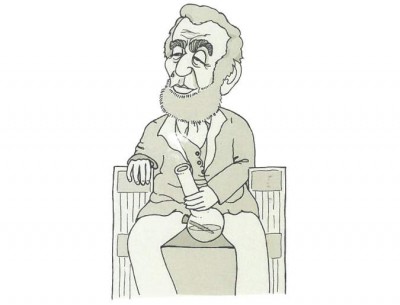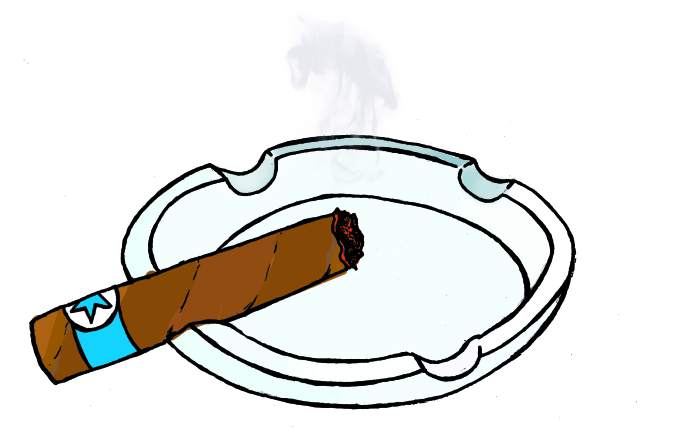Spring has sprung, and it’s finally time to strap on the running shoes and get stoned out of your mind!
There’s no doubt that marijuana is good for all kinds of things: stimulating the appetite, creative brainstorming, giggle-fests . . . but exercise? Yes, apparently. According to an article in last month’s Runner’s World, athletes who use cannabis benefit from stress relief and reduced inflammation.
Now I’m no marathoner, but I do understand the pain and nausea that kind of grind might cause; hell, I “hit the wall” on walks from Starbucks to the car. And long-distance runners are now claiming that the pain relief associated with marijuana is also a huge benefit for their grueling efforts, helping athletes achieve an idealized state earlier in their run.
“When you have runner’s high, you have feelings very similar to those you would feel if you were smoking marijuana,” stated neuroscientist Arne Dietrich in Runner’s World. The prefrontal cortex of the brain regulates both feelings, Dietrich notes, including “sedation, analgesia, mild happiness, the loss of the sensation of time, and a loss of worries.” What? Where was I?
It makes sense that the CBDs that help to block the input of pain for medicinal purposes and act as anti-inflammatories can also help athletes struggling with joint pain in various sports. And we’re not just talking about snowboarders or Ultimate Frisbee Golf jocks either. A Wall Street Journal story recently interviewed ultra-marathon runners, who run up to 200 miles over 20-hour periods, and many noted that cannabis aids with the stomach cramps and intense muscle pain they endure along the way. “The person who is going to win an ultra is someone who can manage their pain, not puke, and stay calm,” said veteran runner Jenn Shelton. “Pot does all three of those things.” I have a better suggestion for these masochistic ultra-marathoners: moderation!
Even the World Anti-Doping Agency and U.S. Track & Field are coming around on dope. Last year the WADA raised the acceptable amount of THC a runner can have in his or her system, flagging only runners who use pot on the day of competition. Using marijuana during training sessions or as a sleep aid the night before a race is all good. There’s a reason the fastest man on the planet, Usain Bolt, is from Jamaica, mon!
Running high as a kite is not for everyone. Chronic smoking has been related to pulmonary irritation and symptoms of chronic bronchitis (including hocking loogies). “There are cardiovascular effects, like increasing heart rate,” says Gregory Gerdeman (The Pot Book) in the Runner’s World piece. “These may be minimal in young athletes or those with tolerance, but should be considered seriously by anyone at risk for coronary heart disease. Plus, there have been some studies that suggest it influences blood flow to the brain, which can influence the risk of stroke.”
Still, cannabis smoking doesn’t have nearly the negative effect on the lungs that tobacco does. The National Institutes of Health did a study in 2013 that I wish I’d been chosen for. They exposed a group of adults to up to seven “joint years”—one joint per day for seven years—and found that even those extremes didn’t diminish lung function. In fact, marijuana users in the study performed a little better than nonsmokers on a lung-function test, because ganja smokers were basically “training” over time by taking deep breaths and holding smoke in.
Outside did its own piece on stoned running (“Know Before You Go!”), and, while not condoning the practice, gave helpful tips, including not getting lost, bringing munchies along the way, and “dosing” in a safe environment: “You don’t want to be 10 miles into the mountains and suddenly feel like you need to take a nap because THC makes you sleepy, then find yourself dozing off in the middle of the woods with no food or shelter.” Their advice on dosing was a little . . . high: “While lower doses often lead to a relaxed physical state and sense of well-being, or a ‘body high,’ high doses can bring on an acid-trip type of experience with hallucinations and possible paranoia. Once the drug kicks in, the high can last from four to 10 hours, or possibly longer.” Not sure where they’re getting their ganja, but I want some. Wow!
My own advice is to use marijuana as a sort of reward after you exercise. The perfect indulgent treat? The CannaBar! It’s a protein candy bar made using almonds, honey, and hemp-based cannabidiols—with less fatty ingredients that the Clif bars you’re shakily shoving in mid-marathon. Sadly, the CannaBar is made with a cannabis sativa without much THC, so it doesn’t get you high; you’ll want to do that in the traditional way—and by that I mean taking off your Brooks, collapsing on the couch, and sucking down bong hits.
This article first appeared in the Seattle Weekly.






